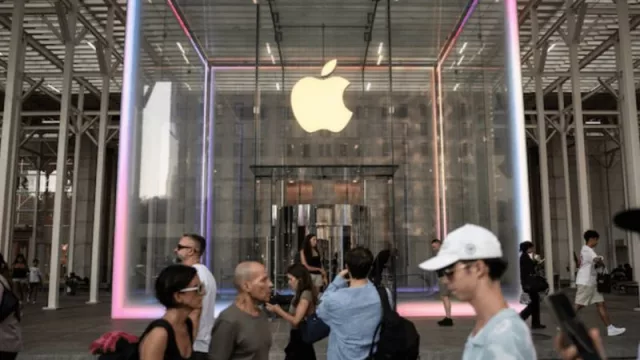An investigation recently carried out by the Non-Governmental Organization Latino Donnor Collaborative together with the Wells Fargo bank, shows great data for the world economy and really important for Florida, and above all for Miami.
If the Latin community were a country, Latinos in the United States would be the fifth largest economy in the world.
According to the Official United States Census (2020), Miami is the city with the highest percentage of the population with Hispanic origin, with 68.6% of its total inhabitants in the entire metropolitan area. This is even more notorious in 2021 and 2022.
10 cities in Florida with the biggest latin community
|
City |
Overall population |
Latin population |
percentage |
|
1. Hialeah |
223,109 |
209,784 |
94 % |
|
2. Miami |
442,241 |
310,472 |
70.2 % |
|
3. Orlando |
307,573 |
101,061 |
32.9 % |
|
4. Tampa |
384,959 |
98,621 |
25.6 % |
|
5. Cape Coral |
194,016 |
46,151 |
23.8 % |
|
6. Port St. Lucie |
204,851 |
44,611 |
21.8 % |
|
7. Fort Lauderdale |
182,760 |
35,176 |
19.2 % |
|
8. Jacksonville |
949,611 |
110,081 |
11.6 % |
|
9. St. Petersburg |
258,308 |
23,289 |
9.0 % |
|
10. Tallahassee |
196,169 |
16,663 |
8.5 % |
Table based on data from the Census Bureau organized by the NALEO Educational Fund.
10 Florida counties with the most Latin American people
|
County |
Overall population |
Latin population |
percentage |
|
1. Miami-Dade |
2.70 millones |
1.86 millones |
68.7 % |
|
2. Orange |
1.43 millones |
473 mil |
33.1 % |
|
3. Broward |
1.94 millones |
609 mil |
31.3 % |
|
4. Hillsborough |
1.46 millones |
427 mil |
29.3 % |
|
5. Polk |
725 mil |
188 mil |
25.9 % |
|
6. Palm Beach |
1.50 millones |
350 mil |
23.5 % |
|
7. Lee |
761 mil |
188 mil |
22.8 % |
|
8. Duval |
996 mil |
113 mil |
11.3 % |
|
9. Brevard |
607 mil |
68 mil |
11.2 % |
|
10. Pinellas |
959 mil |
113 mil |
10.7 % |
Table based on data from the Census Bureau organized by the NALEO Educational Fund.
This information is very relevant to Florida, the economic contribution of Latin Americans in the United States represents the fifth gross domestic product (GDP) in the world, and the third fastest growing among the largest economies. We tell you why Florida is a new world economic pole, here.
According to the United States Census Bureau, in 2020, almost 60 million people of Hispanic or Latin origin resided in the United States and this number keeps on increasing post-pandemic.
According to research, the GDP of the Latin community in the USA in 2020 was 2.8 billion dollars and if this were the population of an independent country, its economic contribution would be the fifth largest after the United States, China, Japan and Germany.
This means that the economic activity of Latin people, who make up almost 19% of the US population, has been greater than that of the United Kingdom, India or France, according to the report.
"While impressive in volume, the GDP of American Latino people is even more remarkable in its rapid growth," added the report by Dan Hamilton and Matthew Fienup of California Lutheran University, and David Hayes Bautista and Paul Hsu of the University of California, Los Angeles.
The study states: "Latin Americans are the second largest population group in our country (United States). They are also growing in population numbers, while the Anglo population is shrinking. Their most common age is eleven in compared to age 58 for Anglo Americans, 27 for African Americans, and 29 for Asian Americans.The combination of population size and growth, youthful age, and dramatic growth in educational attainment has created an ideal formula for the growth and resilience that makes the Latin American cohort the foundation of our New Mainstream Economy."
"Despite being only 19% of the US population, Latin American people have been responsible for 73% of the growth in the US workforce since 2010. From 2010 to 2020, Latinos added workers to the US workforce almost 15 times more than non-Latinos", explains this study. It was the third fastest growing among the ten largest in the world.
In that period, the growth of the economic activity of Hispanics had a rate 2.6 times higher than that of the non-Latino population.
According to data collected by the organization, the consumption of Latin people in the United States is greater than that of the economies of entire countries such as Canada and South Korea. In addition, it highlights that in 2020 the GDP (Gross Domestic Product) generated by the Latin community was $2.8 billion dollars, a figure only behind the United States, China, Japan and Germany if we talk about countries.
"In that year, the consumption of US Latin Americans reached 1.84 billion dollars or 66% of Latin GDP," the report stressed.
Mexicans, Venezuelans, Colombians and more and more Argentinians do not stop arriving and investing in Florida. (See recent specific content here).












Tu opinión enriquece este artículo: